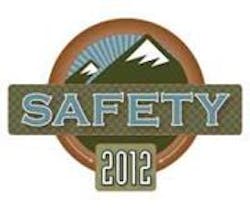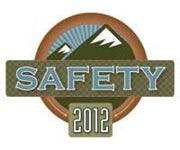Safety 2012: 10 Reasons Your Risk Assessments Are Inadequate
"Organizations face a wide range of risk every day that has the potential to impact their ability to stay in business," said Bruce Lyon, CSP, PE, ARM, CHMM. "Risk assessment is an important tool to help manage that process."
10. Failing to perform a formal risk assessment. Organizations may fail to conduct risk assessments for a variety of reasons: lack of resources, believing that the risk already is managed or doesn't need to be managed, assuming that insurance carriers or consultants are responsible for risk assessments, risk assessments are not mandated or the organization has not experienced significant events. "The key is to identify a strategy when, how and why risk assessments are being performed," Lyon said.
9. Failing to define the purpose and scope of the assessment. "When you fail to have a good purpose and scope, you lack direction, you lack focus," Hollcroft explained. "When you do have a good focus of scope, you get input from people who are going to be using that information."
8. Failing to understand organization's acceptable risk level. "A lot of organizations that I have dealt with have not thought of or defined what they are willing to accept in terms of risk," Lyon said. "Then you see a lot of organizations that promote the zero-injury goal. That's an impossible goal. There is a level where we have to accept the risk based on the fact that it's either impractical to reduce the risk further or the costs outweigh the gains that are achieved."
7. Failing to assemble the best team possible to perform the risk assessment. Without a trained, informed and competent team behind your efforts, the risk assessment will be weak.
6. Failing to use the best risk assessment technique. Organizations that are unaware or unskilled in risk assessment can fall into this trap.
5. Failing to be objective and unemotional during the assessment. Factors that may result in a biased or emotion-based assessment include influence from recent events/trends, personal experiences, personal areas of interest and strong personalities. The assessment team needs to be well balanced, objective and unemotional while assessing risk.
4. Failing to identify hazards and see combined whole-system risk. "Having a diverse team is important to address range of potential risks that exist," Lyon said. "If risk isn't identified, it doesn't get managed." Don't view risks as mutually exclusive; consider how individual risks could impact other risks.
3. Failing to consider the hierarchies of controls or prioritize by risk. "It's just not effective to rely on PPE," Hollcroft said. "If you don't have reliable controls, you might not want to consider them in the assessment."
2. Failing to perform risk assessment during the design/redesign stage. "Unfortunately, many organizations don't even consider doing risk assessments at this stage," Lyon said, but in reality, this is an imperative time for risk assessments. Conduct assessments at new facilities, during installations and when modifications and changes occur.
And the No. 1 reason your risk assessments may be inadequate is…
1. Failing to communicate before, during and after the assessment. Before an assessment, determine who needs to be involved and ensure they understand what's expected of them. During the assessment, make sure everyone understands the process and their responsibilities. And afterward, convey the information to others so they can put it to work for themselves. "Figure out what you can share and share it," Hollcroft said. "Failure to communicate is a huge shortcoming when we conduct risk assessments."
About the Author

Laura Walter
Laura Walter was formerly senior editor of EHS Today. She is a subject matter expert in EHS compliance and government issues and has covered a variety of topics relating to occupational safety and health. Her writing has earned awards from the American Society of Business Publication Editors (ASBPE), the Trade Association Business Publications International (TABPI) and APEX Awards for Publication Excellence. Her debut novel, Body of Stars (Dutton) was published in 2021.

